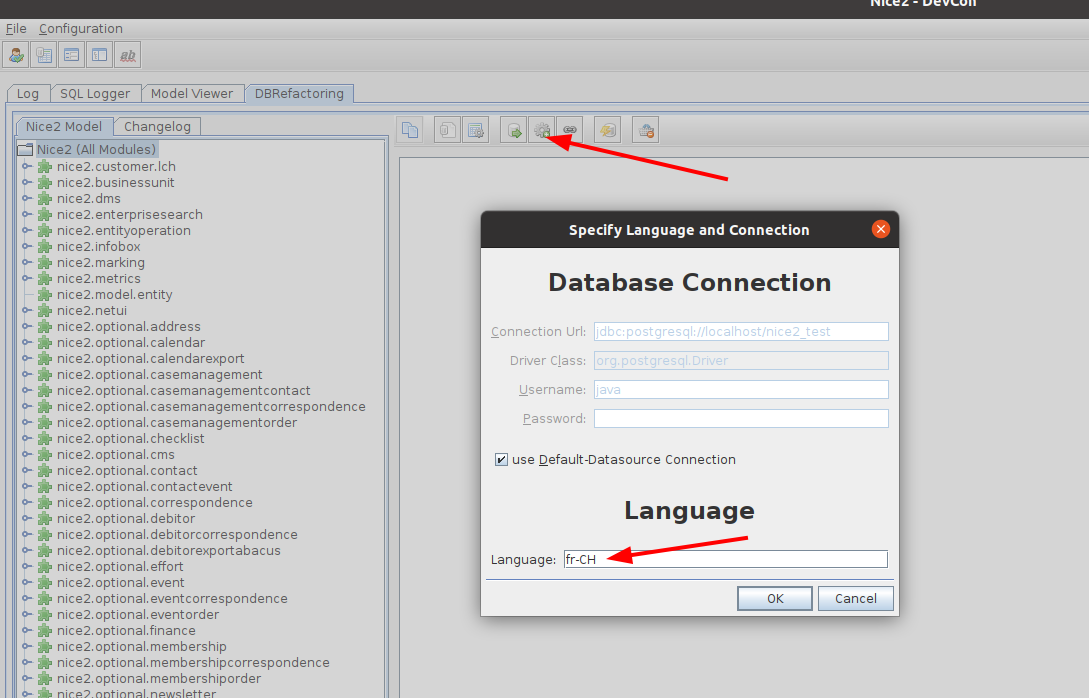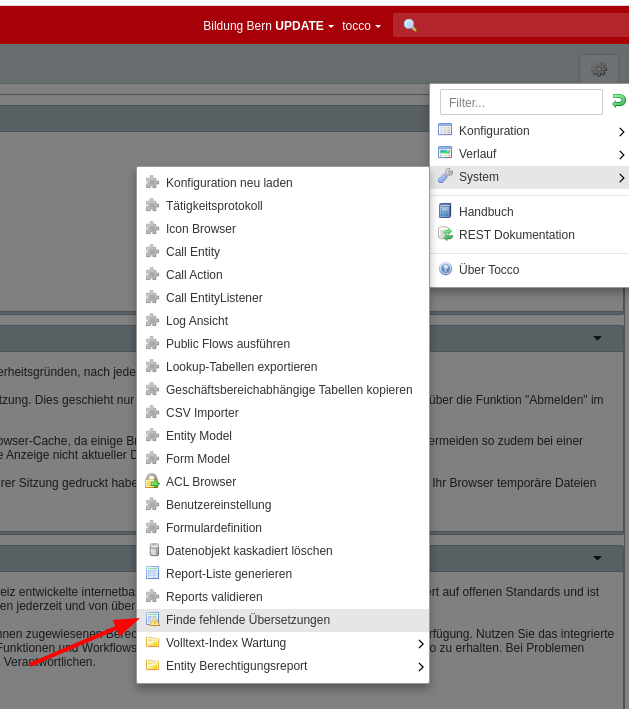This is an internal documentation. There is a good chance you’re looking for something else. See Disclaimer.
Language Upgrade
Adding a new language is a two step process. In a first step, the language needs to be added to the code and changesets to add the missing language columns need to be created. In a second step, missing translations need to be located and added.
Change Code & Generate Changesets
start the system locally and run all changesets / make sure the db is clean
add language to
application.propertiese.g.i18n.locale.available=de-CH,fr-CHcopy language.properties file of fallback locale and add it in the new locale. e.g.
language_fr.propertiescoordinate translation of the new language.properties file with project manager
change runenv to update
-Dch.tocco.nice2.runenv=updatetemporarily comment out
System.exit(125);andSystem.exit(126);inStarterExecutorImpl(dont commit this change!)start devcon and run “Update to a new language”

find the generated changelog

split the generated changelog and add it to the customer module as followed
new_language_definition-> add toschemafolder. This change adds the columnsnew_language_values-> add toinitialvaluesfolder. This change sets the values of the new columns to the corresponding fallback-locale valuenew_language_constraints-> add toschemafolder. Sets the constraints of the new columns
remove hashes from
databasechangelogtable of the database:update databasechangelog set md5sum = null;(this needs to be executed on the test / prod database aswell!)run changesets, start modelvalidation to check if the database is clean again
translations of all standard entities with version 1 (e.g. not edited) will be added automatically
Find missing translations
To find missing translations a new action was added.

This action will generate a list of all entities that potentially have a missing translations. To do this, it checks if a localized field is equal to the corresponding fallback locale field.
The generated list needs to be checked and can be fixed as followed:
decide to ignore it (e.g. Order_positions of existing Orders do not need to be translated as these orders are not in the new locale)
manually translate it (this is required for all customer edited / customer created entities)
use csv export / import to be able to apply it to as well the test as the prod system
decide to reset it to the “standard” (all fields / languages). This can be useful if …
… the entity contains only standard values and was accidentally changed
… the standard entity was added before initialvalues were available and the old standard changeset contained a wrong version
to reset an entity back to standard, have a changeset created for it that resets the version to 1. Please find below an example of such a changeset. If not all entities of a table need to be reset, additional
whereconditions should be added.
<changeSet author="adsc" dbms="postgresql" id="reset-gender-J92nMaL/2.23">
<preConditions onFail="MARK_RAN">
<not>
<sqlCheck expectedResult="0">select count(*) from nice_gender where _nice_version != 1</sqlCheck>
</not>
</preConditions>
<update tableName="nice_gender">
<column name="_nice_version" valueNumeric="1"/>
<where>_nice_version != 1</where>
</update>
</changeSet>